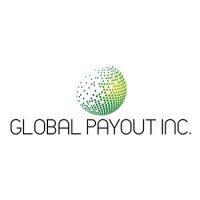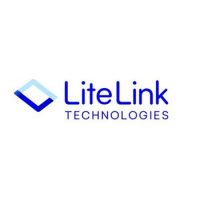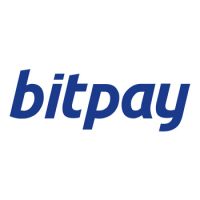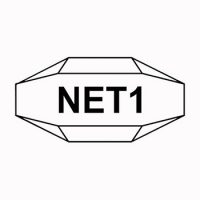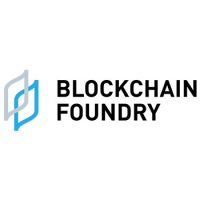Blockchain Press Releases
BGC Partners Updates its Outlook for the Second Quarter of 2023 and Provides an Update on the Corporate Conversion

NEW YORK, June 29, 2023 /PRNewswire/ — BGC Partners, Inc. (Nasdaq: BGCP) (“BGC Partners” or “BGC” or the “Company”), a leading global brokerage and financial technology company, today announced that it has updated its outlook for the quarter ending June 30, 2023, and provided an update on the timing of its corporate conversion.
Updated Outlook
BGC reaffirmed its previously stated outlook ranges for revenue and pre-tax Adjusted Earnings for the second quarter of 2023. The Company’s outlook was contained in BGC’s financial results press release issued on May 3, 2023, which can be found at http://ir.bgcpartners.com.
Corporate Conversion Update:
BGC Partners, Inc. is expected to complete its corporate conversion to a Full C-Corporation on Saturday, July 1, 2023. The Company will change its name to “BGC Group, Inc.” and its Nasdaq ticker symbol to “BGC” from “BGCP”.
The Company plans to issue a press release on July 3, 2023, under its new name BGC Group, Inc. to announce the completion of the corporate conversion. The Company will also update its main website to http://www.bgcg.com and its investor relations website to http://ir.bgcg.com.
Non-GAAP Financial Measures
This document contains non-GAAP financial measures that differ from the most directly comparable measures calculated and presented in accordance with Generally Accepted Accounting Principles in the United States (“GAAP”). Non-GAAP financial measures used by the Company include “Adjusted Earnings before noncontrolling interests and taxes”, which is used interchangeably with “pre-tax Adjusted Earnings”; “Post-tax Adjusted Earnings to fully diluted shareholders”, which is used interchangeably with “post-tax Adjusted Earnings”; “Adjusted EBITDA”; “Liquidity”; and “Constant Currency”. The definitions of these terms are below.
Adjusted Earnings Defined
BGC uses non-GAAP financial measures, including “Adjusted Earnings before noncontrolling interests and taxes” and “Post-tax Adjusted Earnings to fully diluted shareholders”, which are supplemental measures of operating results used by management to evaluate the financial performance of the Company and its consolidated subsidiaries. BGC believes that Adjusted Earnings best reflect the operating earnings generated by the Company on a consolidated basis and are the earnings which management considers when managing its business.
As compared with “Income (loss) from operations before income taxes” and “Net income (loss) for fully diluted shares”, both prepared in accordance with GAAP, Adjusted Earnings calculations primarily exclude certain non-cash items and other expenses that generally do not involve the receipt or outlay of cash by the Company and/or which do not dilute existing stockholders. In addition, Adjusted Earnings calculations exclude certain gains and charges that management believes do not best reflect the ordinary results of BGC. Adjusted Earnings is calculated by taking the most comparable GAAP measures and adjusting for certain items with respect to compensation expenses, non-compensation expenses, and other income, as discussed below.
Calculations of Compensation Adjustments for Adjusted Earnings and Adjusted EBITDA
Treatment of Equity-Based Compensation Line Item for Adjusted Earnings and Adjusted EBITDA
The Company’s Adjusted Earnings and Adjusted EBITDA measures exclude all GAAP charges included in the line item “Equity-based compensation and allocations of net income to limited partnership units and FPUs” (or “equity-based compensation” for purposes of defining the Company’s non-GAAP results) as recorded on the Company’s GAAP Consolidated Statements of Operations and GAAP Consolidated Statements of Cash Flows. These GAAP equity-based compensation charges reflect the following items:
- Charges with respect to grants of exchangeability, which reflect the right of holders of limited partnership units with no capital accounts, such as LPUs and PSUs, to exchange these units into shares of common stock, or into partnership units with capital accounts, such as HDUs, as well as cash paid with respect to taxes withheld or expected to be owed by the unit holder upon such exchange. The withholding taxes related to the exchange of certain non-exchangeable units without a capital account into either common shares or units with a capital account may be funded by the redemption of preferred units such as PPSUs.
- Charges with respect to preferred units. Any preferred units would not be included in the Company’s fully diluted share count because they cannot be made exchangeable into shares of common stock and are entitled only to a fixed distribution. Preferred units are granted in connection with the grant of certain limited partnership units that may be granted exchangeability or redeemed in connection with the grant of shares of common stock at ratios designed to cover any withholding taxes expected to be paid. This is an alternative to the common practice among public companies of issuing the gross amount of shares to employees, subject to cashless withholding of shares, to pay applicable withholding taxes.
- GAAP equity-based compensation charges with respect to the grant of an offsetting amount of common stock or partnership units with capital accounts in connection with the redemption of non-exchangeable units, including PSUs and LPUs.
- Charges related to amortization of RSUs and limited partnership units.
- Charges related to grants of equity awards, including common stock or partnership units with capital accounts.
- Allocations of net income to limited partnership units and FPUs. Such allocations represent the pro-rata portion of post-tax GAAP earnings available to such unit holders.
The amounts of certain quarterly equity-based compensation charges are based upon the Company’s estimate of such expected charges during the annual period, as described further below under “Methodology for Calculating Adjusted Earnings Taxes.”
Virtually all of BGC’s key executives and producers have equity or partnership stakes in the Company and its subsidiaries and generally receive deferred equity or limited partnership units as part of their compensation. A significant percentage of BGC’s fully diluted shares are owned by its executives, partners and employees. The Company issues limited partnership units as well as other forms of equity-based compensation, including grants of exchangeability into shares of common stock, to provide liquidity to its employees, to align the interests of its employees and management with those of common stockholders, to help motivate and retain key employees, and to encourage a collaborative culture that drives cross-selling and revenue growth.
All share equivalents that are part of the Company’s equity-based compensation program, including REUs, PSUs, LPUs, HDUs, and other units that may be made exchangeable into common stock, as well as RSUs (which are recorded using the treasury stock method), are included in the fully diluted share count when issued or at the beginning of the subsequent quarter after the date of grant. Generally, limited partnership units other than preferred units are expected to be paid a pro-rata distribution based on BGC’s calculation of Adjusted Earnings per fully diluted share. However, out of an abundance of caution and in order to strengthen the Company’s balance sheet due the uncertain macroeconomic conditions with respect to the COVID-19 pandemic, BGC Holdings, L.P. has reduced its distributions of income from the operations of BGC’s businesses to its partners.
Compensation charges are also adjusted for certain other cash and non-cash items.
Certain Other Compensation-Related Adjustments for Adjusted Earnings
BGC also excludes various other GAAP items that management views as not reflective of the Company’s underlying performance in a given period from its calculation of Adjusted Earnings. These may include compensation-related items with respect to cost-saving initiatives, such as severance charges incurred in connection with headcount reductions as part of broad restructuring and/or cost savings plans.
Calculation of Non-Compensation Adjustments for Adjusted Earnings
Adjusted Earnings calculations may also exclude items such as:
- Non-cash GAAP charges related to the amortization of intangibles with respect to acquisitions;
- Acquisition related costs;
- Certain rent charges;
- Non-cash GAAP asset impairment charges; and
- Various other GAAP items that management views as not reflective of the Company’s underlying performance in a given period, including non-compensation-related charges incurred as part of broad restructuring and/or cost savings plans. Such GAAP items may include charges for exiting leases and/or other long-term contracts as part of cost-saving initiatives, as well as non-cash impairment charges related to assets, goodwill and/or intangibles created from acquisitions.
Calculation of Adjustments for Other (income) losses for Adjusted Earnings
Adjusted Earnings calculations also exclude certain other non-cash, non-dilutive, and/or non-economic items, which may, in some periods, include:
- Gains or losses on divestitures;
- Fair value adjustment of investments;
- Certain other GAAP items, including gains or losses related to BGC’s investments accounted for under the equity method; and
- Any unusual, one-time, non-ordinary, or non-recurring gains or losses.
Methodology for Calculating Adjusted Earnings Taxes
Although Adjusted Earnings are calculated on a pre-tax basis, BGC also reports post-tax Adjusted Earnings to fully diluted shareholders. The Company defines post-tax Adjusted Earnings to fully diluted shareholders as pre-tax Adjusted Earnings reduced by the non-GAAP tax provision described below and net income (loss) attributable to noncontrolling interest for Adjusted Earnings.
The Company calculates its tax provision for post-tax Adjusted Earnings using an annual estimate similar to how it accounts for its income tax provision under GAAP. To calculate the quarterly tax provision under GAAP, BGC estimates its full fiscal year GAAP income (loss) from operations before income taxes and noncontrolling interests in subsidiaries and the expected inclusions and deductions for income tax purposes, including expected equity-based compensation during the annual period. The resulting annualized tax rate is applied to BGC’s quarterly GAAP income (loss) from operations before income taxes and noncontrolling interests in subsidiaries. At the end of the annual period, the Company updates its estimate to reflect the actual tax amounts owed for the period.
To determine the non-GAAP tax provision, BGC first adjusts pre-tax Adjusted Earnings by recognizing any, and only, amounts for which a tax deduction applies under applicable law. The amounts include charges with respect to equity-based compensation; certain charges related to employee loan forgiveness; certain net operating loss carryforwards when taken for statutory purposes; and certain charges related to tax goodwill amortization. These adjustments may also reflect timing and measurement differences, including treatment of employee loans; changes in the value of units between the dates of grants of exchangeability and the date of actual unit exchange; variations in the value of certain deferred tax assets; and liabilities and the different timing of permitted deductions for tax under GAAP and statutory tax requirements.
After application of these adjustments, the result is the Company’s taxable income for its pre-tax Adjusted Earnings, to which BGC then applies the statutory tax rates to determine its non-GAAP tax provision. BGC views the effective tax rate on pre-tax Adjusted Earnings as equal to the amount of its non-GAAP tax provision divided by the amount of pre-tax Adjusted Earnings.
Generally, the most significant factor affecting this non-GAAP tax provision is the amount of charges relating to equity-based compensation. Because the charges relating to equity-based compensation are deductible in accordance with applicable tax laws, increases in such charges have the effect of lowering the Company’s non-GAAP effective tax rate and thereby increasing its post-tax Adjusted Earnings.
BGC incurs income tax expenses based on the location, legal structure and jurisdictional taxing authorities of each of its subsidiaries. Certain of the Company’s entities are taxed as U.S. partnerships and are subject to the Unincorporated Business Tax (“UBT”) in New York City. Any U.S. federal and state income tax liability or benefit related to the partnership income or loss, with the exception of UBT, rests with the unit holders rather than with the partnership entity. The Company’s consolidated financial statements include U.S. federal, state, and local income taxes on the Company’s allocable share of the U.S. results of operations. Outside of the U.S., BGC is expected to operate principally through subsidiary corporations subject to local income taxes. For these reasons, taxes for Adjusted Earnings are expected to be presented to show the tax provision the consolidated Company would expect to pay if 100 percent of earnings were taxed at global corporate rates.
Calculations of Pre- and Post-Tax Adjusted Earnings per Share
BGC’s pre- and post-tax Adjusted Earnings per share calculations assume either that:
- The fully diluted share count includes the shares related to any dilutive instruments, but excludes the associated expense, net of tax, when the impact would be dilutive; or
- The fully diluted share count excludes the shares related to these instruments, but includes the associated expense, net of tax, when the impact would be anti-dilutive.
The share count for Adjusted Earnings excludes certain shares and share equivalents expected to be issued in future periods but not yet eligible to receive dividends and/or distributions. Each quarter, the dividend payable to BGC’s stockholders, if any, is expected to be determined by the Company’s Board of Directors with reference to a number of factors, including post-tax Adjusted Earnings per share. BGC may also pay a pro-rata distribution of net income to limited partnership units, as well as to Cantor for its noncontrolling interest. The amount of this net income, and therefore of these payments per unit, would be determined using the above definition of Adjusted Earnings per share on a pre-tax basis.
The declaration, payment, timing, and amount of any future dividends payable by the Company will be at the discretion of its Board of Directors using the fully diluted share count. For more information on any share count adjustments, see the table titled “Fully Diluted Weighted-Average Share Count under GAAP and for Adjusted Earnings” in the Company’s most recent financial results press release.
Management Rationale for Using Adjusted Earnings
BGC’s calculation of Adjusted Earnings excludes the items discussed above because they are either non-cash in nature, because the anticipated benefits from the expenditures are not expected to be fully realized until future periods, or because the Company views results excluding these items as a better reflection of the underlying performance of BGC’s ongoing operations. Management uses Adjusted Earnings in part to help it evaluate, among other things, the overall performance of the Company’s business, to make decisions with respect to the Company’s operations, and to determine the amount of dividends payable to common stockholders and distributions payable to holders of limited partnership units. Dividends payable to common stockholders and distributions payable to holders of limited partnership units are included within “Dividends to stockholders” and “Earnings distributions to limited partnership interests and noncontrolling interests,” respectively, in our unaudited, Condensed Consolidated Statements of Cash Flows.
The term “Adjusted Earnings” should not be considered in isolation or as an alternative to GAAP net income (loss). The Company views Adjusted Earnings as a metric that is not indicative of liquidity, or the cash available to fund its operations, but rather as a performance measure. Pre- and post-tax Adjusted Earnings, as well as related measures, are not intended to replace the Company’s presentation of its GAAP financial results. However, management believes that these measures help provide investors with a clearer understanding of BGC’s financial performance and offer useful information to both management and investors regarding certain financial and business trends related to the Company’s financial condition and results of operations. Management believes that the GAAP and Adjusted Earnings measures of financial performance should be considered together.
For more information regarding Adjusted Earnings, see the sections of this document and/or in the Company’s most recent financial results press release titled “Reconciliation of GAAP Income (Loss) from Operations before Income Taxes to Adjusted Earnings and GAAP Fully Diluted EPS to Post-Tax Adjusted EPS”, including the related footnotes, for details about how BGC’s non-GAAP results are reconciled to those under GAAP.
Adjusted EBITDA Defined
BGC also provides an additional non-GAAP financial performance measure, “Adjusted EBITDA”, which it defines as GAAP “Net income (loss) available to common stockholders”, adjusted to add back the following items:
- Provision (benefit) for income taxes;
- Net income (loss) attributable to noncontrolling interest in subsidiaries;
- Interest expense;
- Fixed asset depreciation and intangible asset amortization;
- Equity-based compensation and allocations of net income to limited partnership units and FPUs;
- Impairment of long-lived assets;
- (Gains) losses on equity method investments; and
- Certain other non-cash GAAP items, such as non-cash charges of amortized rents incurred by the Company for its new U.K. based headquarters.
The Company’s management believes that its Adjusted EBITDA measure is useful in evaluating BGC’s operating performance, because the calculation of this measure generally eliminates the effects of financing and income taxes and the accounting effects of capital spending and acquisitions, which would include impairment charges of goodwill and intangibles created from acquisitions. Such items may vary for different companies for reasons unrelated to overall operating performance. As a result, the Company’s management uses this measure to evaluate operating performance and for other discretionary purposes. BGC believes that Adjusted EBITDA is useful to investors to assist them in getting a more complete picture of the Company’s financial results and operations.
Since BGC’s Adjusted EBITDA is not a recognized measurement under GAAP, investors should use this measure in addition to GAAP measures of net income when analyzing BGC’s operating performance. Because not all companies use identical EBITDA calculations, the Company’s presentation of Adjusted EBITDA may not be comparable to similarly titled measures of other companies. Furthermore, Adjusted EBITDA is not intended to be a measure of free cash flow or GAAP cash flow from operations because the Company’s Adjusted EBITDA does not consider certain cash requirements, such as tax and debt service payments.
For more information regarding Adjusted EBITDA, see the section of this document and/or in the Company’s most recent financial results press release titled “Reconciliation of GAAP Net Income (Loss) Available to Common Stockholders to Adjusted EBITDA”, including the footnotes to the same, for details about how BGC’s non-GAAP results are reconciled to those under GAAP.
Timing of Outlook for Certain GAAP and Non-GAAP Items
BGC anticipates providing forward-looking guidance for GAAP revenues and for certain non-GAAP measures from time to time. However, the Company does not anticipate providing an outlook for other GAAP results. This is because certain GAAP items, which are excluded from Adjusted Earnings and/or Adjusted EBITDA, are difficult to forecast with precision before the end of each period. The Company therefore believes that it is not possible for it to have the required information necessary to forecast GAAP results or to quantitatively reconcile GAAP forecasts to non-GAAP forecasts with sufficient precision without unreasonable efforts. For the same reasons, the Company is unable to address the probable significance of the unavailable information. The relevant items that are difficult to predict on a quarterly and/or annual basis with precision and may materially impact the Company’s GAAP results include, but are not limited, to the following:
- Certain equity-based compensation charges that may be determined at the discretion of management throughout and up to the period-end;
- Unusual, one-time, non-ordinary, or non-recurring items;
- The impact of gains or losses on certain marketable securities, as well as any gains or losses related to associated mark-to- market movements and/or hedging. These items are calculated using period-end closing prices;
- Non-cash asset impairment charges, which are calculated and analyzed based on the period-end values of the underlying assets. These amounts may not be known until after period-end; and
- Acquisitions, dispositions and/or resolutions of litigation, which are fluid and unpredictable in nature.
Liquidity Defined
BGC may also use a non-GAAP measure called “liquidity”. The Company considers liquidity to be comprised of the sum of cash and cash equivalents, reverse repurchase agreements (if any), financial instruments owned, at fair value, less securities lent out in securities loaned transactions and repurchase agreements (if any). The Company considers liquidity to be an important metric for determining the amount of cash that is available or that could be readily available to the Company on short notice.
For more information regarding Liquidity, see the section of this document and/or in the Company’s most recent financial results press release titled “Liquidity Analysis”, including any footnotes to the same, for details about how BGC’s non-GAAP results are reconciled to those under GAAP.
Constant Currency Defined
BGC generates a significant amount of its revenues in non-U.S. dollar denominated currencies, particularly in the euro and pound sterling. In order to present a better comparison of the Company’s revenues during the period, which exhibited highly volatile foreign exchange movements, BGC provides revenues year-over-year comparisons on a “Constant Currency” basis. BGC uses a Constant Currency financial metric to provide a better comparison of the Company’s underlying operating performance by eliminating the impacts of foreign currency fluctuations between comparative periods. Since BGC’s consolidated financial statements are presented in U.S. dollars, fluctuations in non-U.S. dollar denominated currencies have an impact on the Company’s GAAP results. The Company’s Constant Currency metric, which is a non-GAAP financial measure, assumes the foreign exchange rates used to determine the Company’s comparative prior period revenues, apply to the current period revenues. Constant Currency revenue percentage change is calculated by determining the change in current quarter non-GAAP Constant Currency revenues over prior period revenues. Non-GAAP Constant Currency revenues are total revenues excluding the effect of foreign exchange rate movements and are calculated by remeasuring and/or translating current quarter revenues using prior period exchange rates. BGC presents certain non-GAAP Constant Currency percentage changes in Constant Currency revenues as a supplementary measure because it facilitates the comparison of the Company’s core operating results. This information should be considered in addition to, and not as a substitute for, results reported in accordance with GAAP.
About BGC Partners, Inc.
BGC Partners, Inc. (“BGC”) is a leading global brokerage and financial technology company. BGC, through its various affiliates, specializes in the brokerage of a broad range of products, including Fixed Income (Rates and Credit), Foreign Exchange, Equities, Energy and Commodities, Shipping, and Futures. BGC, through its various affiliates, also provides a wide variety of services, including trade execution, brokerage, clearing, trade compression, post-trade, information, and other back-office services to a broad range of financial and non-financial institutions. Through its brands, including Fenics®, FMX™, FMX Futures Exchange™, Fenics Markets Xchange™, Fenics Digital™, Fenics UST™, Fenics FX™, Fenics Repo™, Fenics Direct™, Fenics MID™, Fenics Market Data™, Fenics GO™, Fenics PortfolioMatch™, BGC®, BGC Trader™, kACE2™, and Lucera®, BGC offers financial technology solutions, market data, and analytics related to numerous financial instruments and markets. BGC, BGC Group, BGC Partners, BGC Trader, GFI, GFI Ginga, CreditMatch, Fenics, Fenics.com, FMX, Sunrise Brokers, Poten & Partners, RP Martin, kACE2, Capitalab, Swaptioniser, CBID, Caventor, LumeMarkets and Lucera are trademarks/service marks and/or registered trademarks/service marks of BGC and/or its affiliates.
BGC’s customers include many of the world’s largest banks, broker-dealers, investment banks, trading firms, hedge funds, governments, corporations, and investment firms. BGC’s Class A common stock trades on the Nasdaq Global Select Market under the ticker symbol “BGCP”. BGC is led by Chairman of the Board and Chief Executive Officer Howard W. Lutnick. For more information, please visit http://www.bgcpartners.com. You can also follow BGC at https://twitter.com/bgcpartners, https://www.linkedin.com/company/bgc-partners and/or http://ir.bgcpartners.com/Investors/default.aspx.
Discussion of Forward-Looking Statements about BGC
Statements in this document regarding BGC that are not historical facts are “forward-looking statements” that involve risks and uncertainties, which could cause actual results to differ from those contained in the forward-looking statements. These include statements about the effects of the COVID-19 pandemic on the Company’s business, results, financial position, liquidity and outlook, which may constitute forward-looking statements and are subject to the risk that the actual impact may differ, possibly materially, from what is currently expected. Except as required by law, BGC undertakes no obligation to update any forward-looking statements. For a discussion of additional risks and uncertainties, which could cause actual results to differ from those contained in the forward-looking statements, see BGC’s Securities and Exchange Commission (“SEC”) filings, including, but not limited to, the risk factors and Special Note on Forward-Looking Information set forth in these filings and any updates to such risk factors and Special Note on Forward-Looking Information contained in subsequent reports on Form 10-K, Form 10-Q or Form 8-K.
Media Contact:
Karen Laureano-Rikardsen
+1 212-829-4975
Investor Contact:
Jason Chryssicas
+1 212-610-2426
Logo – https://mma.prnewswire.com/media/136112/bgc_partners_inc_logo.jpg
View original content:https://www.prnewswire.co.uk/news-releases/bgc-partners-updates-its-outlook-for-the-second-quarter-of-2023-and-provides-an-update-on-the-corporate-conversion-301867464.html

Blockchain
DTCC partners with Chainlink and JPMorgan to pilot blockchain integration for fund data
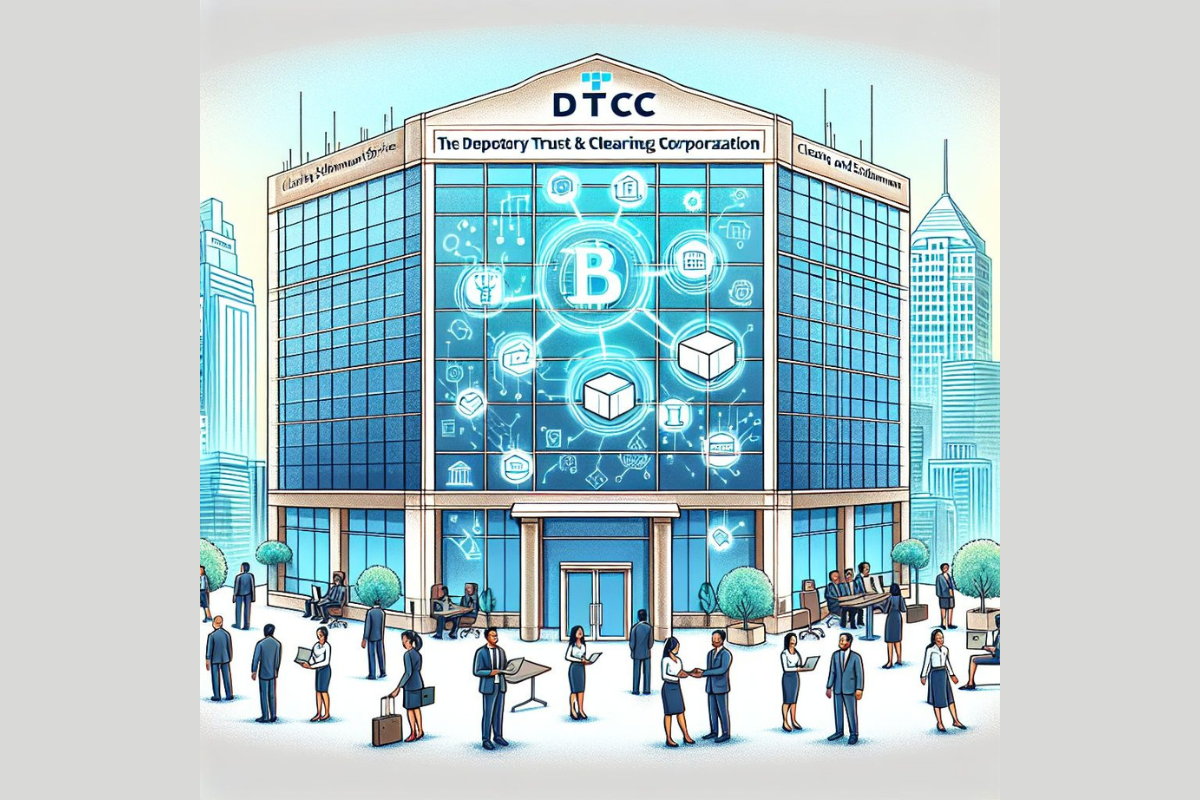
As headlines spotlight spot Bitcoin (BTC) exchange-traded fund (ETF) flows and institutions revealing their exposure to BTC ETFs, financial service infrastructure providers are quietly integrating blockchain technology into their systems.
According to a recent report from the Depository Trust & Clearing Corporation (DTCC), the firm conducted a pilot program named Smart NAV in collaboration with Chainlink (LINK). This initiative aimed to extend the capabilities of DTCC’s Mutual Fund Profile Service I (MFPS I), the industry standard for transmitting ‘Price and Rate’ data, also known as ‘NAV data.’
DTCC’s Mutual Fund Services business currently operates MFPS I, offering fund companies an automated solution to deliver prices and daily distribution rates to numerous clients for tens of thousands of mutual fund securities. Traditionally, DTCC collects price and rate data from funds/service providers and distributors, then aggregates and disseminates it at regular intervals through its message queue (MQ) and file-based methods.
The Smart NAV Pilot served as a digital extension of the existing MFPS I service, aiming to broaden and complement its current capabilities. DTCC recognized the growing interest in mutual fund tokenization and saw an opportunity for on-chain price and rate data to facilitate new initiatives. Taking a ‘chain-agnostic’ approach, meaning the ability to disseminate NAV data across virtually any blockchain, was crucial for enabling other use cases to build upon Smart NAV’s foundations.
Ten market participants, including major names like American Century Investments, BNY Mellon, and JP Morgan, collaborated with DTCC and Chainlink on the pilot. They evaluated the feasibility and industry value of implementing a distributed ledger technology (DLT)-based price and rate dissemination solution to unlock new benefits and support experimentation in the asset management space.
The pilot results demonstrated that delivering structured data on-chain and establishing standard roles and processes enabled foundational data to be integrated into various on-chain use cases, such as tokenized funds and bulk consumer smart contracts. This capability can fuel future industry exploration and empower numerous downstream use cases, including brokerage portfolio applications.
The simplest application of Smart NAV is to provide trusted, verifiable data on virtually any blockchain network to support its use in business workflows. During the pilot, DTCC acted as both the provider and governor of the on-chain data solution, while Chainlink’s CCIP served as the interoperability layer. The core capability explored is adaptable across a wide range of use cases, potentially enhancing operational efficiency and streamlining processes.
Based on the positive findings, DTCC sees an opportunity to expand the scope of the pilot to explore broader use cases beyond price and rate data dissemination and across more blockchains.
Source: kitco.com
The post DTCC partners with Chainlink and JPMorgan to pilot blockchain integration for fund data appeared first on HIPTHER Alerts.
Blockchain
Is Donald Trump’s Recent Crypto-Friendly Stance Genuine Or Opportunistic? Experts Weigh In

Presidential candidate Donald Trump recently made a surprising endorsement of crypto, suggesting that he would ease hostility towards cryptocurrencies in the US if re-elected.
Trump stated, “If we’re going to embrace it, we have to let them be,” and urged crypto supporters to vote for him. This marks a significant shift from his previous criticisms of Bitcoin and other cryptocurrencies in 2019, where he labeled them as “not money” due to their volatility and lack of intrinsic value, expressing concerns about their potential use in illegal activities like drug trafficking.
Crypto’s Impact on Voter Preferences
With approximately 20% of American adults reportedly holding crypto, candidates are taking notice. Markus Levin of XYO Network sees embracing crypto and implementing solid regulation as a strategic move in elections and sound policy overall. He believes Trump’s apparent positive stance towards the industry will sway some voters in his favor.
Jonathan Thomas of Blueberry suggests that Trump’s crypto-friendly rhetoric may attract voters who prioritize crypto as a single-issue matter.
Skepticism Surrounding Trump’s Crypto Support
However, not everyone is convinced by Trump’s newfound endorsement of crypto. NFT enthusiast Thorne Melcher views it as “flimsy” and warns against the potential for conservative politics to restrict crypto due to its use in areas such as trans hormone replacement therapy and abortions.
While some may see Trump’s support for crypto as a reason to vote for him, others like Stephanie Vaughan of Veda caution against assuming substantial benefits from this endorsement alone. Vaughan highlights the Biden Administration’s hardline stance on crypto regulation by enforcement, which she believes is unworkable and could push voters towards Trump.
Trump’s Strategy to Attract Crypto Voters
Trump’s pivot from crypto skeptic to NFT enthusiast reflects a strategic move to appeal to voters interested in crypto. Vaughan suggests that many crypto-focused voters may have supported Biden in the last election, but Trump is actively courting them by recognizing the industry’s significance.
By acknowledging crypto’s growing influence on voters, Trump aims to draw support away from Biden, positioning himself as the candidate more aligned with the interests of the crypto community.
Source: cryptonews.com
The post Is Donald Trump’s Recent Crypto-Friendly Stance Genuine Or Opportunistic? Experts Weigh In appeared first on HIPTHER Alerts.
Blockchain
droppGroup Unveils Platform with AI-Blockchain Integration
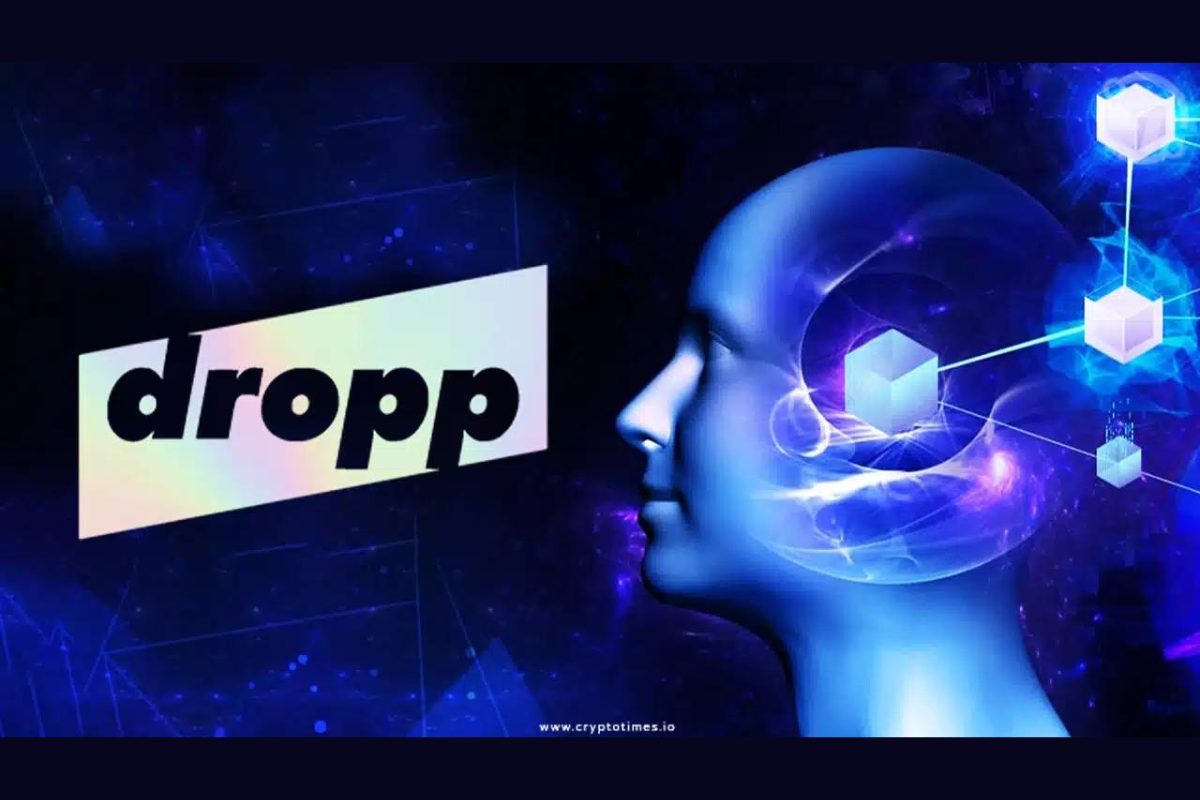
droppGroup, a trailblazer in amalgamating blockchain and artificial intelligence, has unveiled droppLink, an innovative service platform poised to potentially revolutionize AI management and development across various blockchains. The architecture of droppLink empowers users with control over data contributions, abstracts computational requirements, and streamlines micropayments.
Stakeholders, dubbed Computational Resource Patrons (CRPs), contribute to the infrastructure costs and share profits from the facilitated AI operations.
As a web3 development firm, droppGroup specializes in deploying patented innovations in AI, machine learning (ML), object recognition, streaming, crypto, augmented reality (AR), virtual reality (VR), and mixed reality (MR). droppGroup is now advancing multi-modal AI systems with droppLink.
Gurps Rai, co-founder and CEO of droppGroup, explains that droppLink tokenizes each stage in an AI model’s lifecycle across multiple blockchains, such as Solana, Polygon, Ethereum, Base, and Hyperledger Fabric 2.5, ensuring unparalleled data integrity and expediting AI development.
Rai added, “This process upholds data ownership rights while establishing a transparent, immutable usage record via our Proof of Gen and Data Genesis protocols.”
Christopher J. Kelly, co-founder and president of droppGroup, underscores the company’s commitment to pushing the boundaries of multi-modal AI systems at the convergence of physical and digital realms, introducing cutting-edge solutions to the market.
Scheduled to speak on the monitoring and evaluation panel at the AWS Summit on May 22, Kelly will address topics like data integrity in AI and its alignment with the company’s mission.
With the AI market projected to reach $297 billion by 2027, ethical considerations such as data provenance, intellectual property protection, and fair compensation are paramount.
Accessible through droppPhygital, droppLink leverages multi-chain integration and robust tokenization to bolster data integrity. By melding blockchain technology with artificial intelligence, droppLink establishes an ethical management layer, aiming to reshape the AI landscape by fostering trust, transparency, and innovation.
Source: cryptotimes.io
The post droppGroup Unveils Platform with AI-Blockchain Integration appeared first on HIPTHER Alerts.
-

 Blockchain Press Releases3 days ago
Blockchain Press Releases3 days agoSwaps Launches Innovative Payment Links for Crypto and Fiat Transactions
-

 Blockchain5 days ago
Blockchain5 days agoRevoluGROUP Canada Inc. Announces Leave of Absence for Chairman Bernard Lonis
-

 Blockchain Press Releases3 days ago
Blockchain Press Releases3 days agoBybit’s Ethereum Euphoria: Predict Market Movements for the ETH ETF and Win
-

 Blockchain Press Releases3 days ago
Blockchain Press Releases3 days agoOKX, Circle, and Bitrue Among Sponsors of Consensus 2024
-

 Blockchain Press Releases3 days ago
Blockchain Press Releases3 days agoBybit Launches Exclusive P2P Trading Offers for SEA Users
-

 Blockchain Press Releases3 days ago
Blockchain Press Releases3 days agoBitget Wallet Unveils Bitget Onchain Layer, Rolls Out $10M BWB Ecosystem Fund
-

 Blockchain Press Releases4 days ago
Blockchain Press Releases4 days agoKuCoin Research Report Reveals: $1 Billion in Financing and Rising Stablecoin Issuance Amid Market Fluctuations
-

 Blockchain Press Releases3 days ago
Blockchain Press Releases3 days agoUnleash a Wave of Opportunities this May with Bybit





